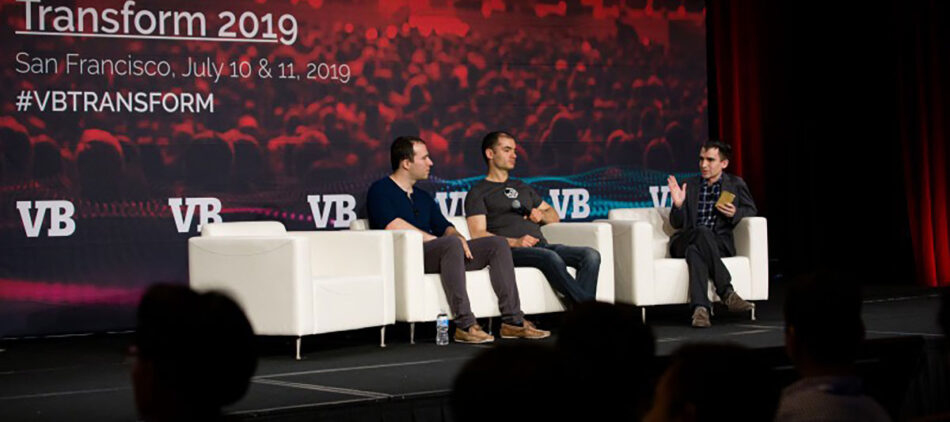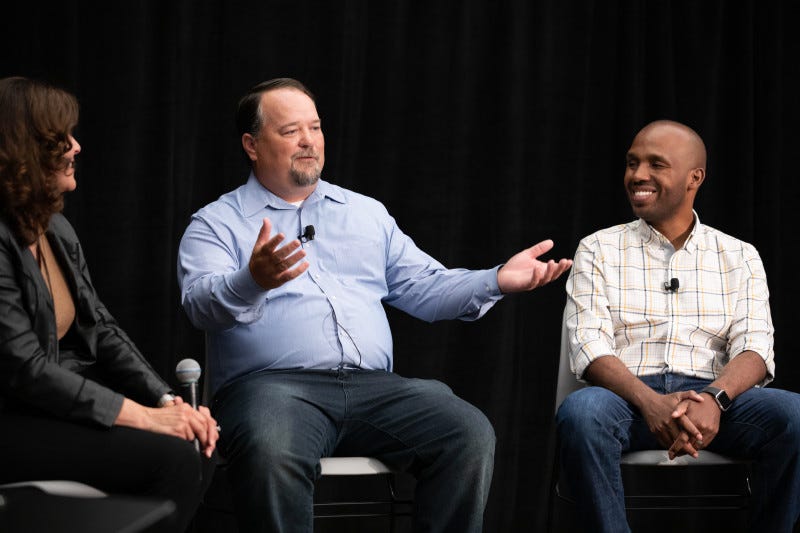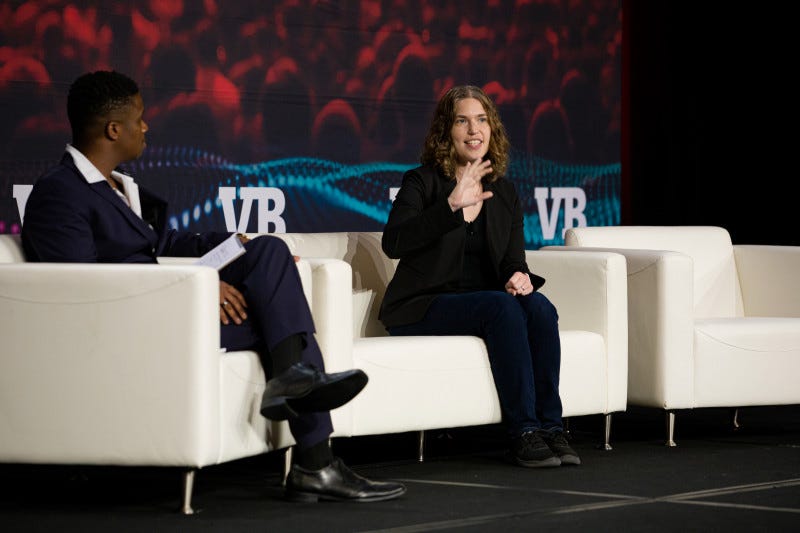
Is the market finally ready for mass AI adoption?
Five Aha Moments from VentureBeat Transform
I just came back from the Venture Beat Transform 2019 conference here in San Francisco, and I have to say, for the first time in many years, I’m starting to feel like the industry is finally starting to get it.
What am I talking about specifically? Well, I’m traditionally always right about stuff, and this time, I’ve been incredibly right about the challenges the market may have had in adopting machine learning. Just check out these excellent blog posts;
- Machine Learning is sometimes wrong — how you deal with that is EVERYTHING
- How a funny subreddit helps explain machine learning
- Integrating AI? Here are 3 problems you’re about to encounter.
- What machine learning isn’t
It really felt like everyone at this conference had read these posts and was reporting everything they learned to the audience. That, of course, is exactly what didn’t happen.
Help humans make better decisions

For the first time in what feels like thousands of years, I went to an AI conference that had people on stage talking about the right away to adopt machine learning. So finally, I think the market, as a whole, is really starting to understand where the value is, and why machine learning can be such an amazing technology.
Right off the bat at the conference, I was hit with a company talking about how all they do is help humans make better decisions. No nonsense about 100% full automation, or replacing human cognition with models that are better than we are… just a fireside chat about a simple machine learning-powered solution that let humans make better decisions.
This IS what machine learning is uniquely situated to do. It can plough through billions of bits of data and surface only what is important, it can predict when and where there will be issues for a human to then review, and it can let us focus on doing the things that humans are uniquely situated to do. The CTO of Microsoft said shortly thereafter that “focus is very important”. Yes it is my good sir, yes, it is.
Embedding the human
It is still the case that the data scientists reign supreme as our guides and leaders through this somewhat new technology. I’m sure we all wish we could be experts, but the single most valuable aspect to machine learning today is how well you can marry a problem with data sets. Gap, Facebook, and Uber all had presentations about how they successfully integrated machine learning into their stacks, and to absolutely no one’s surprise, there were some commonalities.
The most interesting common denominator to successful deployments of AI at these enterprises was the embedding of data scientists into different teams across the org. These brave men and women spent most of their time listening. “What problems were people having?” they’d ask themselves. Only after sitting with their colleagues and understanding the problems would they recommend an ML-powered solution. This is how they achieved scale with AI adoption within the organization. A major cloud vendor (probably AWS) told someone at Facebook that their internal use of AI is greater than the combined use of all of their customers using their AI services.
This is critical. One must always consider a problem before trying to implement technology. “Let’s do something with AI” isn’t going to work. That is like saying “let’s do something with electricity” or “the internet”.
Inaccuracy and uncertainty
My favorite part of the conference was a panel in the computer vision track about the Royal Caribbean Cruises’ use case for counting people in a restaurant. If there ever were only two things, when added together, that send me into a rage, it would be lines and restaurants. Waiting for food, because of crowds, is my version of hell.
Directing me to a different restaurant because one of them is full would definitely prevent me from orchestrating a mutiny onboard a Royal Caribbean cruise. Well… that is precisely what they did, but they did it with computer vision!
Their goal was to use the camera feed from a CCTV camera in the restaurant to count the people present, and relay that information to an app that would reroute a customer. But they ran into a problem. Training a computer vision model to count people from a fisheye security camera stream is every machine learning engineer’s worst nightmare.
I raised my hand and asked why they didn’t just use a different camera mounted in a better place, and the answer surprised me. New cameras have to be marine-certified and installed while the ship is in dry dock, which is a lot more expensive than just training YOLO on some horrible fisheye video.
Training a people counter on a fisheye video camera feed did not yield a model that could be super accurate about the number of people in a restaurant. Fortunately, they realized that there is no business value in telling the difference between 100–115 people. All they really needed to know was a range of numbers of people to determine how full the space was. So they didn’t worry about returning a perfectly accurate exact number.
EXCELCIOR! This is exactly how to implement machine learning.
Failure Mode

Hilary Mason the GM of Machine Learning at Cloudera listed several failure modes that an enterprise can get into when implementing AI. At the top of that list is unrealistic expectations. Ah good ol’ unrealistic expectations, something I’m reminded of every time I look in the mirror or write a blog post. But it also was something I’ve professionally battled in the AI industry for years now.
It was mentioned on stage during the same fireside chat that media hype around machine learning is problematic because it doesn’t focus on whether or not something is useful. I did an incredible job writing about this back in early 2018 because even back then the trend of mismatched expectations was in full swing. So again, it was a wonderful relief to see others parroting back what I see as a fundamental blocker to successful adoption of AI at scale.
Here is an example of how it happens, and more importantly, how you can address it.
When speech to text first became available as an API service, I watched sales people go to broadcasters and sell it as an alternative to having humans create closed captioning. When the customer actually ran their content through these systems, the results were only about 80% accurate…if they were lucky. As an alternative to closed captioning, speech to text failed.
When I saw this happening I grabbed the sales teams, brought them into a room, and demonstrated how speech to text generates a lot of searchable terms (for example people, places, and things) that provide a lot of value to content managers and archives. Then, the sales teams went out and started talking about solving searchability issues, and that’s when we started to see success.
We shouldn’t be running around looking for problems to solve with machine learning, we need to start with the problem, and see how machine learning can add value.
Who Owns the Future?
Hilary Mason also reminds us that developers are used to interacting with deterministic systems. If I put 2+2 into a calculator, 4 should always come out. But in machine learning, the first time you put 2+2 into a system, the answer might be wrong. Developers need to start getting used to systems that learn, systems that return probabilities with error bars.
Broad developer use of machine learning will see greater market adoption of the technology, but the real magic will happen once it makes its way through the world of developers and makes it to the level of product. Only product managers understand business and the market, and in theory, can build the bridge between the technology and the enterprise buyers. They know what the customer really needs, not developers, data scientists, sales people or anyone else.
The trick with machine learning, however, is overcoming the technical barrier to entry. The tooling to enable developers and product managers to develop, implement and scale useful machine learning is making its way through the market as we speak. As these capabilities saturate the minds of the right people in the right positions we’ll see the mass adoption of AI we’ve all been promised.
Is the market finally ready for mass AI adoption? was originally published in Towards Data Science on Medium, where people are continuing the conversation by highlighting and responding to this story.